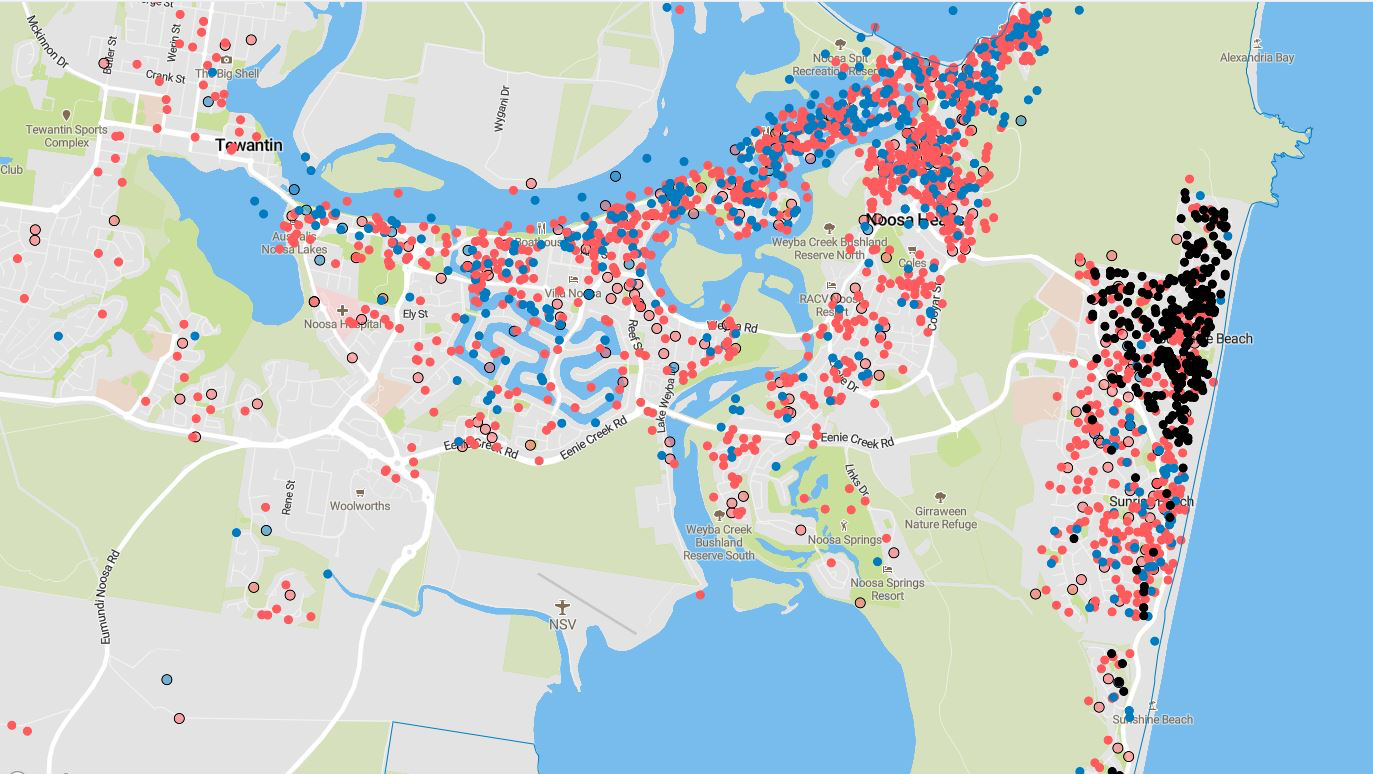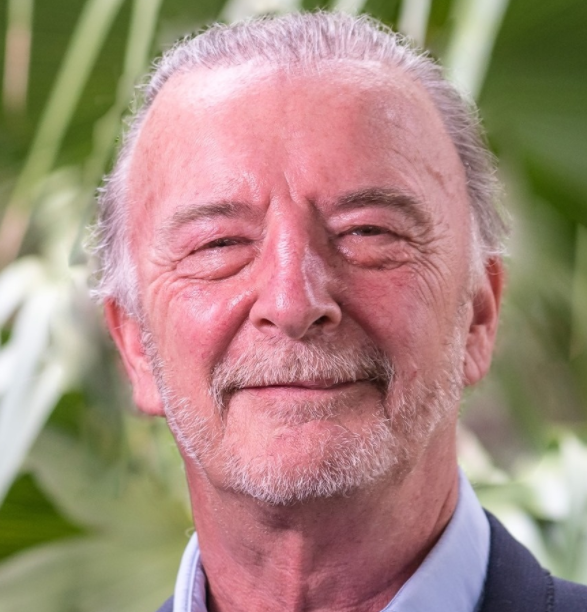WHILE most Noosa Council Ordinary Meetings (OM) are primarily rubber-stampings of decisions voted in the previous Monday’s General Committee (GC), there can at times be extended debate on seemingly unresolved issues.
An item in the GC of January 20 concerned a short-term accommodation (STA) application from the owners of a duplex being built in Noosa Heads’ Angler Street, which then became the focus of intense debate at January 23’s OM, which your correspondent was unavailable to view online until recently.
There had been a 4-3 vote in favour of the staff’s recommendation to refuse the Angler St STA application – lodged in August 2021 – while the application to build the duplex – lodged in September 2020 – had been approved.
Councillors in favour of the refusal at the GC were Wilkie, Stockwell, Jurisevic and Wegener; those against being Stewart, Lorentson and Finzel.

The OM debate was initiated by Mayor Clare Stewart, who suggested that the 4-3 decision to refuse should be “re-prosecuted”, following questions from Cr Amelia Lorentson about the application of the Noosa Plan toward determining whether an STA application is “consistent” with the Noosa Plan’s intent to allow some STA into medium-density residential areas, such as Angler St.
In questions to staff, Cr Lorentson suggested the applicant had been advised the chances of securing STA approval over the duplexes was good, however Development Assessment Manager Kerri Coyle explained the applicant had been advised during a pre-lodgement meeting in 2020 that only the duplex application had been commented on.
The STA application was not made until nearly a year later with the advice on it being unlikely to gain approval, but the applicant went ahead anyway, Ms Coyle said.
Cr Stewart asked Ms Coyle if the processes were “subjective”, to which Ms Coyle explained the processes, while not always black and white, had good evidence to ensure they would withstand any court appeal.
Ms Coyle added that, even if an application is consistent with the plan, other factors could still see it refused.
This led to debate over interpretation of the Noosa Plan in relation to STAs, and suggestions the policy of the plan seemed to be changing with each new application.
Cr Wilkie said: “Staff are trained to read the planning scheme; councillors can interpret it, but they’re not experts.”
“The interpretation of the Noosa Plan is in terms of neighbourhoods, principally for permanent residents,” he said.
Cr Stewart persisted.
“[The application] is black and white. This is consistent with the Noosa Plan.
“There is no noise, it has underground parking, there are no complaints from neighbours; it’s screened from other properties,” she said.
“Twenty-six percent of the street is used for STA, according to information from the applicant.
“It’s a stone’s throw (1.5km) from Hastings St. It’s not a party house, and can be for permanent rental.
“It’s perfect for high-volume visitors. If not here, where?
“The applicant has gone by the book, [put in] two years of hard work. It is compliant in their minds.”
Cr Karen Finzel said “good governance and leadership” was required to clarify the consistency issue.
“The applicant who forwarded this did so full of goodwill,” she said.
But Cr Brian Stockwell said in the last year “no-one has said we needed more tourism accommodation in Noosa – we have a housing shortage”.
“Employers are offering bonuses to get people to work in Noosa,” he said.
Cr Wilkie said the more STA we had, “the less permanent housing stock we have”.
“This refusal is consistent with the Noosa Plan; we need to get the balance right and preserve amenity for those who live and work here,” he said.
Cr Tom Wegener said we “have a housing crisis”.
“My doctor can’t find a place; he’s prepared to pay $1250 a week. STA is impacting permanent accommodation supply,” he said.
The vote again produced a 4-3 in favour of refusal, no-one shifting their position.
Interpretation of “consistency” within STAs and the Noosa Plan is seemingly a sticking point between staff and some councillors, and if this debate was anything to go by, it may be the plan needs some minor tweaking.
But even then, Cr Joe Jurisevic could be on the money when he simply said:
“We are at the point of STA saturation”.
Are we?
After all, we now have around 5000 STA approvals, and the shire is currently home to about 26,000 domestic properties.
That suggests nearly one-fifth of Noosa Shire’s entire domestic property inventory is now available for short-term accommodation letting, a figure believed to be among the highest rates of STA anywhere in Australia.
And given the vast majority of those STAs are located within the Noosa Heads and Sunshine Beach areas the percentage there jumps closer to 50%.
That’s more like the proportion of properties occupied by mining town workers – and STAs are only one, albeit currently globally popular, component of our overall tourism accommodation industry.
That’s a lot of eggs in one basket.
And, seemingly, three councillors want to add many more eggs, based on previous STA voting patterns – although it may be their primary motive is concern over “consistency” and potential legal challenges, despite staff saying processes are sound.
The council should be lauded for its efforts in ensuring some controls over so-called party house STAs along with other regulations to protect neighbourhood amenity, and to recognise STAs as businesses, in line with traditional tourism accommodation providers.
But we also know that 86% of STAs are owned by people (or company structures) located outside Noosa Shire, and 51% of those are outside Queensland.
There will undoubtedly be much speculative money washing around in these percentages, with quick-kill speculators abounding, and at the first sign of trouble – say, an inflation-driven interest rate hike – that money (which delivers little to the local economy other than inflated real estate costs) will be out the door and off to the next get-rich-quick opportunity.
We also know a proportion of STA users often arrive in big numbers to soften the individual costs, bringing their own provisions to avoid “Noosa prices”, and show little respect for a place they have little or no association with at any level.
Will we then see, after the ‘gold rush’ of STA investment, metaphorical tumbleweeds blowing down the empty, uninhabited canyons of Noosa Drive and Duke St as over-leveraged mansions and resorts languish in a harsh, unforgiving economic breeze?
One hopes not – but if Noosa continues with its staff-starved hospitality and retail sectors, massive congestion, an upturn in crime figures and the increasing departure of long-time permanent residents, it will lose its character, its uniqueness and its soul, to become “just another resort town”.

